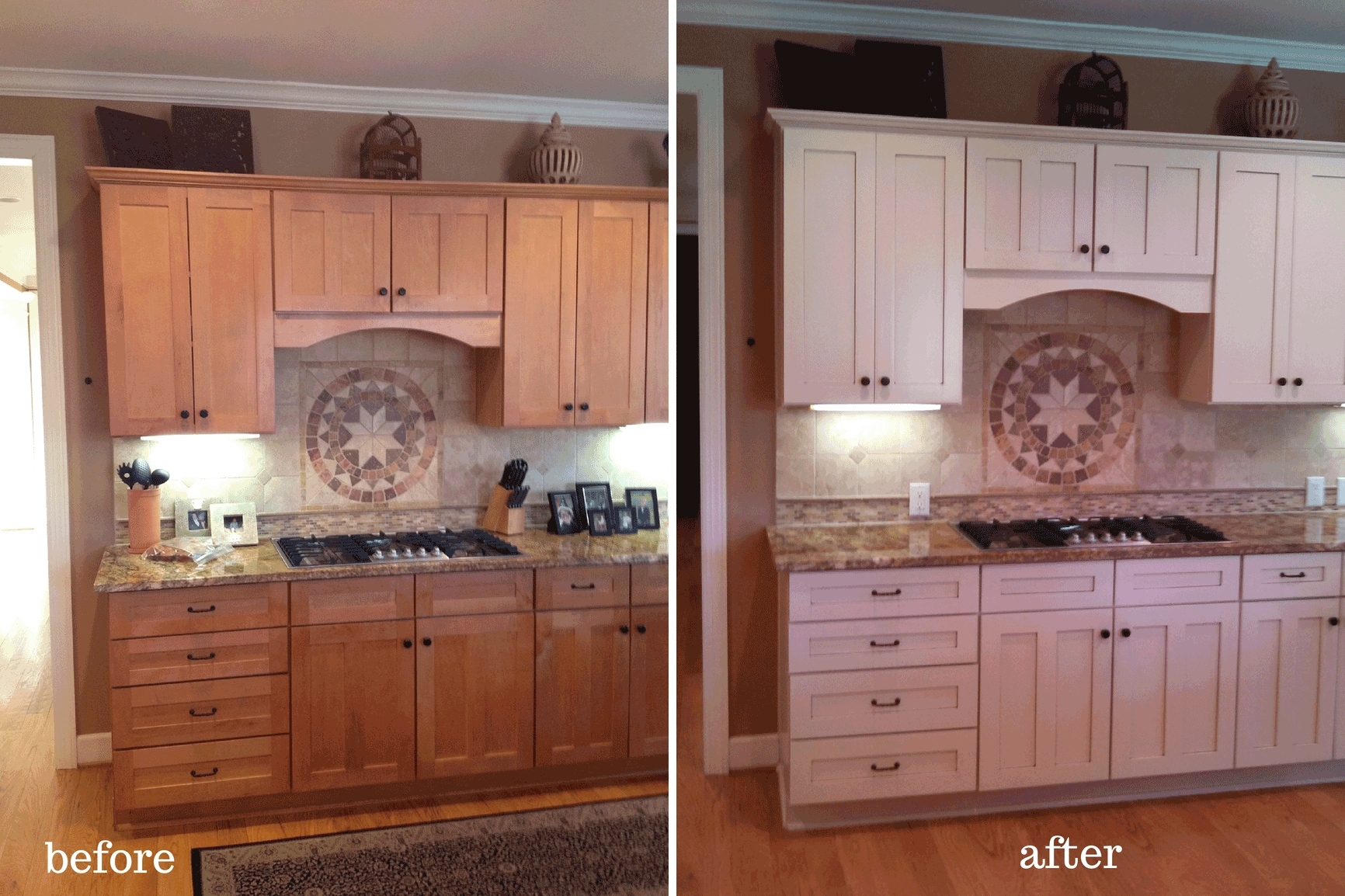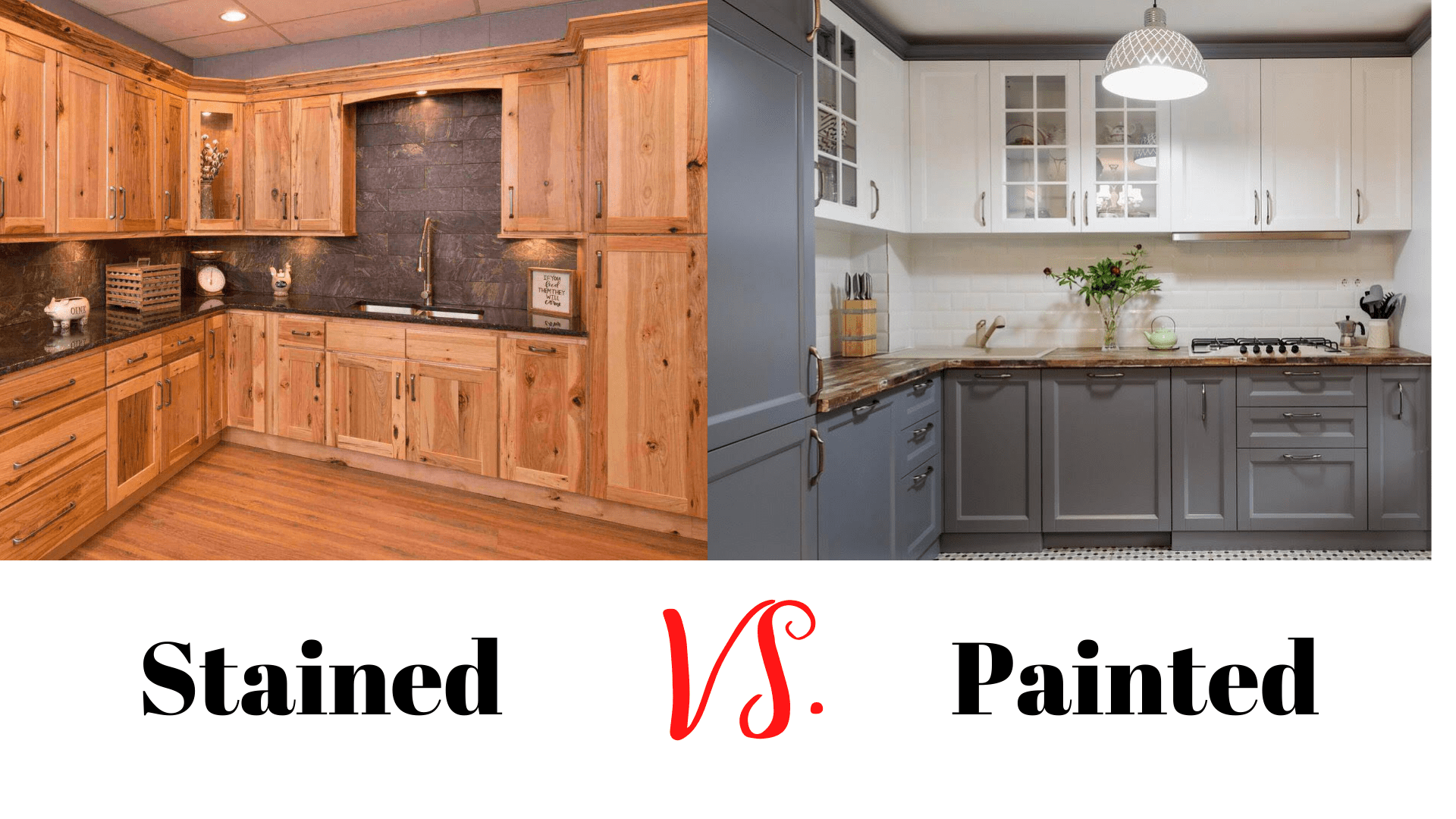Preparing the Cabinets: How To Paint Over Stained Wood Cabinets

Before you start painting, it’s crucial to thoroughly prepare your cabinets. This involves cleaning and sanding to ensure a smooth, even surface that will allow the paint to adhere properly and create a professional-looking finish.
Cleaning the Cabinets
Cleaning the cabinets is essential to remove any grease, grime, dirt, or old finishes that could interfere with the paint’s adhesion.
- Start by removing the cabinet doors and hardware. This allows for easier access to all surfaces and prevents damage to the hardware during the cleaning process.
- Use a degreaser or a mixture of warm water and dish soap. Apply the cleaning solution to a soft cloth and wipe down the entire surface of the cabinets.
- For stubborn stains, use a non-abrasive cleaner or a baking soda paste. Apply the cleaner to a damp cloth and gently scrub the stained areas. Rinse thoroughly with water.
- Allow the cabinets to dry completely before moving on to the next step. This ensures that the paint will adhere properly to the clean surface.
Sanding the Cabinets
Sanding helps to create a smooth surface for the paint to adhere to and removes any imperfections or rough edges.
- Use fine-grit sandpaper (120-180 grit). Start with a coarser grit to remove any rough spots and then switch to a finer grit for a smoother finish.
- Sand in the direction of the wood grain. This helps to prevent scratches and ensures a consistent finish.
- Sand all surfaces, including the inside of the cabinets. This will ensure that the paint adheres evenly to all areas.
- Remove any sanding dust with a tack cloth. This will prevent dust particles from interfering with the paint’s adhesion.
Preparing the Cabinets for Painting
After cleaning and sanding, it’s important to take a few additional steps to prepare the cabinets for painting.
- Apply a primer. Primer helps to seal the surface and creates a smooth, even base for the paint. It also helps to prevent the wood’s natural color from showing through the paint.
- Use painter’s tape to protect any areas you don’t want to paint. This includes the edges of the cabinets, the surrounding walls, and any hardware that you’re not removing.
- Ensure the cabinets are completely dry before applying the paint. This will prevent the paint from peeling or bubbling.
Choosing the Right Paint

Selecting the right paint is crucial for achieving a durable and beautiful finish on your cabinets. The type of paint you choose will impact the durability, finish, and ease of application. Let’s explore the different paint types and their characteristics to help you make an informed decision.
Types of Paint
Different paint types offer unique properties and benefits for painting cabinets. The three most common types are latex, oil-based, and epoxy.
- Latex Paint: Latex paint is water-based and dries quickly, making it a popular choice for home projects. It offers good adhesion, durability, and a wide range of colors. Latex paint is also low-odor and easy to clean up with soap and water.
- Oil-Based Paint: Oil-based paint is known for its durability and high gloss finish. It dries slower than latex paint but provides a harder, more resistant surface. Oil-based paint requires mineral spirits for cleanup, and it can have a strong odor during application.
- Epoxy Paint: Epoxy paint is a two-part system that combines a resin and a hardener. It creates a very durable, chemical-resistant finish that is ideal for high-traffic areas or surfaces prone to spills. Epoxy paint is often used for countertops and floors but can also be applied to cabinets. However, it can be more challenging to apply and requires careful preparation.
Advantages and Disadvantages of Paint Types
| Paint Type | Advantages | Disadvantages |
|---|---|---|
| Latex Paint |
|
|
| Oil-Based Paint |
|
|
| Epoxy Paint |
|
|
Recommended Paint Brands and Colors
- Benjamin Moore: Known for its high-quality paints, Benjamin Moore offers a wide range of colors and finishes, including their popular “Advance” line, which is specifically designed for cabinets and trim. They also have a dedicated “Cabinet Coat” paint line for durable, long-lasting results.
- Sherwin-Williams: Another reputable paint brand, Sherwin-Williams provides a variety of paint options, including their “Emerald” line, which is known for its durability and resistance to stains and scratches. They also offer a “ProClassic” line for cabinets and trim.
- PPG: PPG offers a wide range of paint products, including their “Diamond” line, which is specifically designed for cabinets and trim. They are known for their high-quality paints and wide color selection.
Painting Techniques and Tips

Applying paint to your cabinets requires careful techniques to ensure a professional finish. The chosen method will affect the final look, so choosing the right technique is essential.
Choosing the Right Painting Technique
The best technique for painting cabinets depends on the size and complexity of the project, your experience level, and the desired finish. Here are the most common methods:
- Brushing: This technique is suitable for detailed areas and corners, providing precise control. Use a high-quality brush with angled bristles for optimal results.
- Rolling: Rolling is ideal for large, flat surfaces, offering speed and efficiency. Choose a roller with a nap length appropriate for the paint type and cabinet surface.
- Spraying: This method delivers a smooth, even finish, especially on intricate details. However, it requires proper equipment and ventilation for safety and optimal results.
Achieving a Smooth, Even Finish, How to paint over stained wood cabinets
- Thinning Paint: Thinning the paint with a suitable thinner can improve its flow and coverage, especially when using brushes or rollers. This reduces brushstrokes and creates a smoother finish.
- Using a Primer: Applying a primer before painting is crucial for adhesion and even color coverage. Primer helps seal the wood, preventing stains from bleeding through and creating a smooth surface for the paint.
- Multiple Coats: Applying multiple thin coats of paint is better than one thick coat. This allows the paint to dry evenly, minimizing brushstrokes and creating a professional finish.
- Drying Times: Allow each coat of paint to dry completely before applying the next. This ensures proper adhesion and prevents smudging or uneven application.
Avoiding Brushstrokes and Minimizing Drips
- Load the Brush Properly: Dip the brush into the paint only about one-third of the way up the bristles. Excess paint can lead to drips and uneven application.
- Use Smooth, Even Strokes: Apply paint with smooth, even strokes, overlapping each stroke by about 50%. This ensures consistent coverage and minimizes brushstrokes.
- Remove Excess Paint: After each stroke, wipe off excess paint from the brush on the edge of the paint can or a paint scraper. This prevents drips and creates a cleaner finish.
- Work in Thin Layers: Applying thin layers of paint is crucial for avoiding drips and achieving a smooth finish. Allow each layer to dry completely before applying the next.
How to paint over stained wood cabinets – Painting over stained wood cabinets can be a great way to refresh your kitchen, but remember to prep the surface thoroughly for a smooth finish. Just like choosing the right curtains can make a small bedroom feel bigger, the right paint color can transform your cabinets and make the space feel more open and inviting.
If you’re looking for inspiration on how to maximize space and style with curtains in a small bedroom, check out this helpful guide: curtains in small bedroom. Once you’ve got your kitchen color scheme sorted, you can get started on those cabinets and enjoy a whole new look!
Painting over stained wood cabinets can be a great way to refresh your kitchen, and it’s a surprisingly achievable DIY project. If you’re aiming for a rustic vibe, consider incorporating natural elements like reclaimed wood or woven baskets, just like you might find in a small modern rustic bedroom.
These elements can create a warm and inviting atmosphere that complements the clean lines of painted cabinets. Once you’ve tackled your cabinets, you’ll be ready to tackle any other DIY project in your home, even if it’s as ambitious as a full room makeover.
